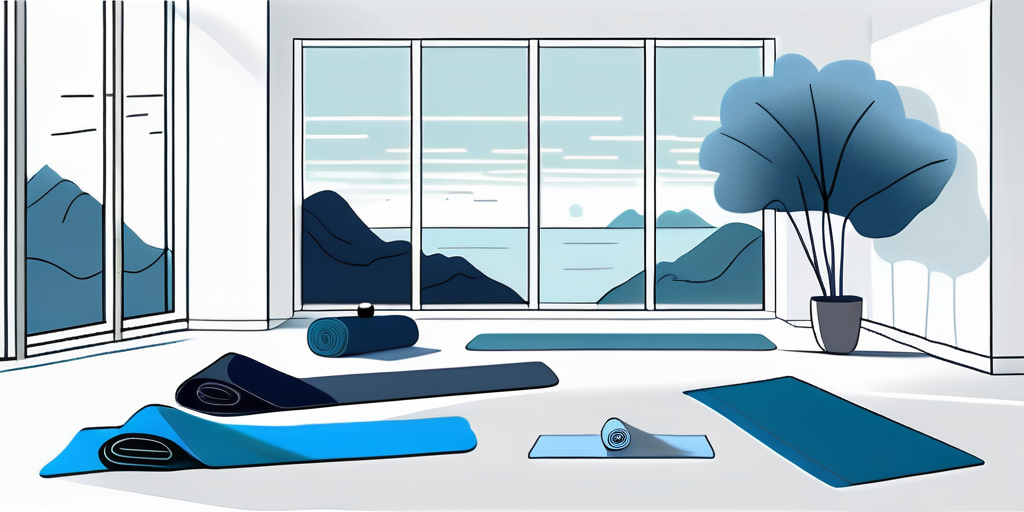Are you looking for a simple yet effective way to improve your wellness? Look no further than regular stretching. Often overlooked, stretching offers a plethora of benefits that go beyond simply increasing flexibility. In this article, we will explore the advantages of incorporating stretching into your daily routine. From injury prevention to stress reduction, you’ll discover why stretching is a valuable tool for improving your well-being.
Understanding the Importance of Flexibility
Flexibility plays a vital role in maintaining a healthy body. Regarding flexibility, we mean the range of motion your joints and muscles can achieve. The more flexible you are, the easier it becomes to perform daily activities and exercise without straining or injuring your body. Regular stretching helps increase your flexibility, enabling you to move more quickly and efficiently.
Moreover, flexibility is not only crucial for physical health but also for mental well-being. Flexibility in the body often translates to flexibility in the mind, allowing individuals to adapt to new situations and challenges more easily. It promotes relaxation and reduces stress levels, contributing to overall emotional wellness.
The Link Between Flexibility and Joint Health
Your level of flexibility directly influences the health of your joints. By stretching regularly, you can improve the elasticity of your joints, preventing stiffness and discomfort. This can be particularly beneficial for individuals with conditions such as arthritis, as stretching helps to reduce joint pain and maintain joint functionality.
Furthermore, maintaining joint flexibility can enhance athletic performance and reduce the risk of sports-related injuries. Flexible joints are less prone to strains and sprains, allowing athletes to move more efficiently and effectively during training and competition.
The Impact of Flexibility on Posture
Good posture is essential for maintaining a healthy spine and overall well-being. Lack of flexibility can lead to poor posture, resulting in imbalances and strain on different body parts. Incorporating stretching exercises into your routine can improve your posture and align your body correctly. This, in turn, reduces the risk of developing muscular imbalances and chronic pain.
Also, proper posture benefits physical health and influences how others perceive you. Standing and sitting with correct alignment conveys confidence and professionalism, making a positive impression in various social and professional settings. It also promotes better breathing and circulation, enhancing overall vitality and energy levels.
How Stretching Prevents Injuries
Prevention is always better than cure; stretching is crucial in injury prevention. Whether you are a professional athlete or simply someone who enjoys physical activities, regularly stretching can significantly reduce your chances of sustaining injuries. Here’s how:
The Benefits of Dynamic Stretching
Dynamic stretching is an active form of stretching that involves moving parts of your body through a full range of motion. This type of stretching prepares your muscles and joints for physical activity, making them less prone to injuries. Incorporating dynamic stretches into your pre-workout routine can enhance your performance and reduce the risk of strains and sprains.
Imagine yourself getting ready for a challenging basketball game. Before hitting the court, you perform dynamic stretches that involve lunges, arm circles, and leg swings. These movements warm up your muscles and increase blood flow to the targeted areas. As a result, your muscles become more pliable, allowing you to move with agility and reducing the likelihood of muscle tears or strains during the game.
The Importance of Static Stretching
Unlike dynamic stretching, static stretching involves holding a stretch for an extended period. This type of stretching is best suited for post-workout or as a separate activity throughout the day. Static stretching increases muscle flexibility, allowing them to recover more efficiently and lowering the risk of delayed-onset muscle soreness (DOMS).
Imagine you’ve just completed a challenging weightlifting session. Your muscles are tired, and you can feel tightness in your shoulders and lower back. This is the perfect time to incorporate static stretches into your routine. As you hold a stretch for 30 seconds or more, you can feel the tension slowly releasing, providing your muscles with a sense of relief and relaxation. Not only does this help prevent muscle imbalances and post-workout stiffness, but it also promotes better overall recovery.
Targeted Stretching for Specific Muscle Groups
Different activities and sports require the use of specific muscle groups. Targeting these muscles with appropriate stretches is vital to improve flexibility and prevent injuries. For example, runners can benefit from stretches that target the hamstrings and calves, whereas swimmers may focus on shoulder and upper back stretches. By understanding the demands of your preferred activities, you can tailor your stretching routine to minimize the risk of injuries.
Imagine you are a cyclist preparing for a long-distance race. You incorporate targeted stretches into your routine to ensure your muscles are primed for the intense physical demands of cycling. You focus on stretching your quadriceps, hip flexors, and glutes to improve your range of motion and prevent common cycling injuries such as IT band syndrome or knee pain. Dedicating time to these specific muscle groups enhances your performance and reduces the risk of long-term damage.
Key Stretching Techniques for Different Muscle Groups
To make the most of your stretching routine, it’s essential to utilize various techniques that target different muscle groups. Here are some of the key stretching techniques you can incorporate:
Static Stretches
Static stretches involve holding a position for 15-30 seconds without bouncing or moving. These stretches are ideal for increasing overall flexibility and can be performed before and after physical activity.
Dynamic Stretches
Dynamic stretches involve controlled movements that move joints and muscles through a full range of motion. They improve blood flow and are particularly effective as warm-up exercises before physical activity.
PNF Stretches
PNF (Proprioceptive Neuromuscular Facilitation) stretches involve a combination of passive stretching and isometric contractions. These stretches enhance muscle relaxation and inhibit the stretch reflex, allowing for a deeper stretch. PNF stretches are often performed with a partner for optimum results.
The Role of Stretching in Stress Reduction and Relaxation
Did you know that stretching benefits your body and promotes mental well-being? In today’s fast-paced world, stress is a common occurrence. However, regular stretching can help alleviate stress and promote relaxation. Here’s how:

The Mind-Body Connection
Stretching offers an opportunity to reconnect with your body and focus on the present moment. As you perform different stretches, you become aware of the sensations in your muscles and the tensions you hold. This heightened awareness allows you to consciously release physical and mental tension, leading to calm and relaxation.
Reduced Muscle Tension
Stress often manifests as muscle tension, leading to discomfort and even pain. Stretching helps alleviate muscle tension by promoting blood circulation and releasing endorphins, natural pain-relieving and mood-enhancing chemicals produced by the body. Incorporating stretching into your daily routine can reduce the physical symptoms associated with stress and promote relaxation.
Incorporating Stretching into Your Daily Routine
Now that we have explored the many benefits of stretching let’s discuss how you can incorporate it into your daily routine. Here are some practical tips:
Set Realistic Goals
Start by setting realistic goals for your stretching routine. Whether you aim for a specific duration or gradually increase the number of stretching exercises, setting achievable goals will help you stay motivated and track your progress.
Find a Consistent Time
Choose a consistent time during the day that works best for you. It could be in the morning to energize your body, during a break from work, or in the evening to unwind and relax. Making stretching a regular part of your daily routine makes it easier to stick to it.
Make it Enjoyable
Adding variety to your stretching routine can make it more enjoyable. Explore different stretching techniques, such as yoga or Pilates, or incorporate gentle music or aromatherapy to create a relaxing environment. Engaging all your senses can enhance the overall experience and make stretching something you look forward to.
Tips for Safe and Effective Stretching
While stretching offers numerous benefits, it’s crucial to approach it safely and effectively. Follow these tips to make the most of your stretching routine:

Warm-Up before Stretching
Before stretching, warm up your body with light aerobic exercises such as walking or cycling. Warming up increases blood flow to the muscles and prepares them for stretching, reducing the risk of injury.
Focus on Proper Form
While stretching, pay attention to your form to ensure you target the intended muscle group and minimize strain on other areas. Avoid bouncing or jerking movements and maintain a steady and controlled stretch. If you are unsure about the proper form, seek guidance from a qualified fitness professional.
Breathe and Relax
Remember to breathe deeply and relax during each stretch. Deep breathing promotes oxygen flow to your muscles and encourages relaxation, making the stretch more effective. Avoid holding your breath or tensing your muscles, which can hinder your stretching results.
Listen to Your Body
Everyone’s flexibility levels differ, so it’s important to listen to your body’s signals and avoid pushing yourself too far. Never stretch to the point of pain. Instead, focus on a gentle, comfortable stretch that allows you to gradually improve your flexibility over time.
Frequently Asked Questions About Stretching and Wellness
How Often Should I Stretch?
The frequency of stretching depends on your goals and current level of flexibility. Aim for at least 2-3 days per week to maintain flexibility. Consider stretching up to 5-6 days per week to improve flexibility.
Is It Better to Stretch Before or After Exercise?
Both pre- and post-workout stretching have benefits. Pre-workout stretching with dynamic stretches prepares your body for physical activity. Post-workout stretching with static stretches helps cool down your muscles, reduce soreness, and maintain flexibility.
Can Stretching Help with Back Pain?
Yes, regular stretching can help alleviate back pain. By improving flexibility and reducing muscle tension, stretching can relieve strain on the spine and promote proper alignment, reducing back pain.
Don’t underestimate the power of regular stretching for your overall wellness. By incorporating stretching into your daily routine, you can experience improved flexibility, reduced risk of injuries, stress reduction, and enhanced relaxation.
Remember to approach stretching correctly, listen to your body, and make it an enjoyable part of your day. Start reaping the benefits of stretching today and unlock your full potential for a healthier, more balanced life.
Looking for a chiropractor in Smiths Falls? Let’s get in touch!


